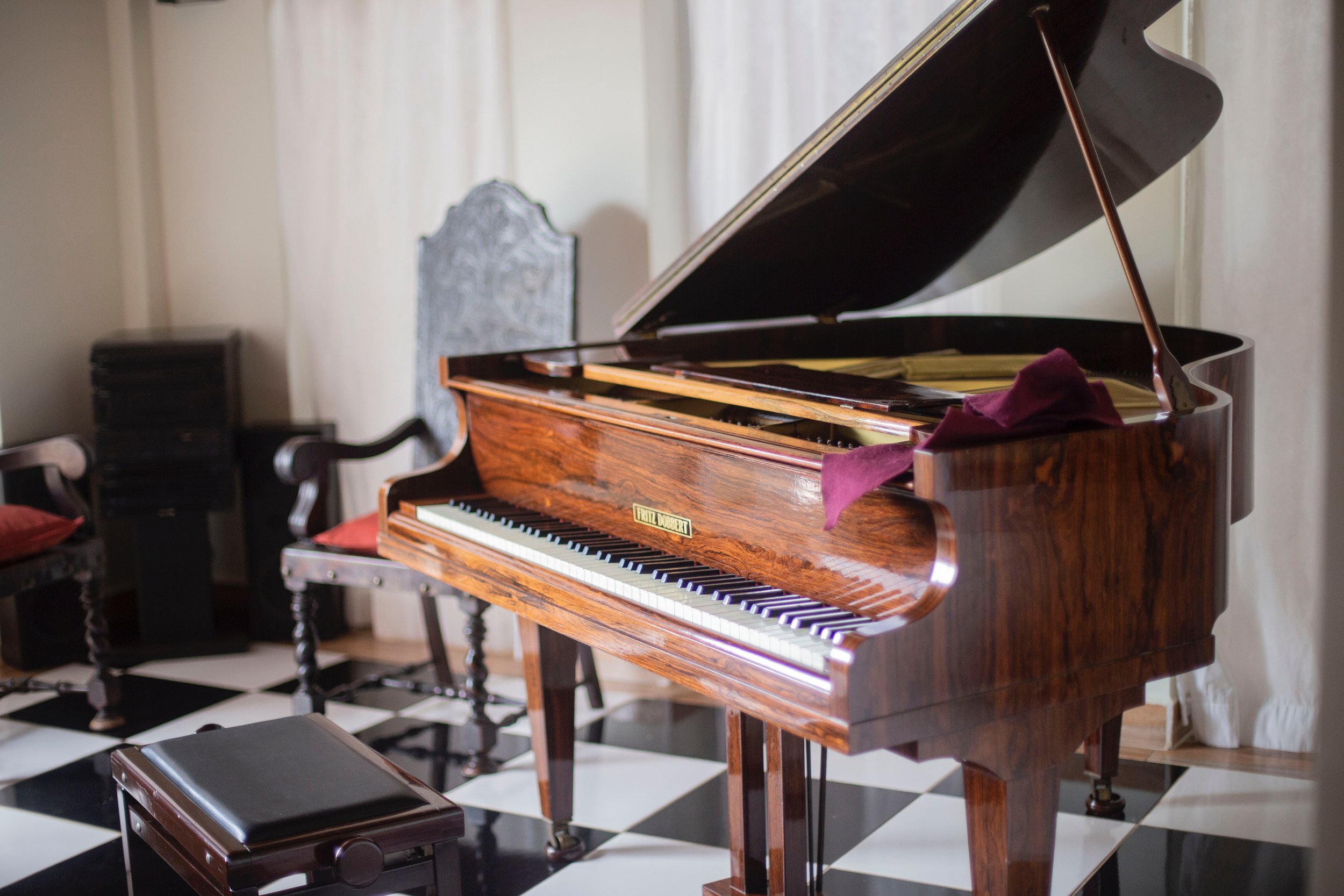How to Approach the Piano: Posture, Alignment, and Wrist Health
Many new students have difficulty maintaining good posture during practice and performance. And we empathize. Holding your body in a new, unnatural way can be a challenge. It’s like when baseball catchers squat for an entire game. How do they do it? Well, it’s like any exercise. Over time, the muscles and tendons get stronger and can hold the body in proper position.
While proper posture at the piano can be tough, the alternative is much worse. You don’t want to practice bad habits over three years only to have to unlearn all the incorrect techniques at a later date. It’s much harder to break a habit than to build one up from scratch.
Improper posture can also cause injuries for piano players. Strained shoulders, hurt wrists, and stiff necks can result from poor technique.
So, if you’re wondering how to approach the piano, pay attention to these helpful tips!
How to Approach the Piano?
Sitting at the piano and holding your hands correctly is essential for playing efficiently and avoiding injury. Here are some tips for achieving the right posture and hand position:
Sit up straight: Your back should be straight and your shoulders relaxed. Your hips should be slightly forward, so that your back is at a slight angle to the piano bench.
Keep your feet flat on the floor: Your feet should be flat on the floor, so that your knees are at a 90-degree angle. This will help you maintain stability and control over the pedals.
Position your hands correctly: Your hands should be positioned so that your wrists are level with the keys. This will help you play with ease and precision. Avoid hunching over the keyboard, as this can lead to tension and injury.
Use the natural curve of your fingers: Your fingers should follow the natural curve of your hand, with the tips of your fingers resting on the keys. This will help you play with fluidity and control.
Keep your elbows close to your body: Your elbows should be close to your body, so that your arms can move freely. This will also help you maintain good posture and avoid tension in your shoulders.
By following these tips, you'll be able to sit and play the piano with good posture and proper hand position, which will make playing more enjoyable and less likely to cause pain or injury. Remember that it's important to take breaks and stretch your hands, arms, and back regularly to avoid tension and injury.
Resonate Music is your destination for piano lessons in Colorado Springs. Have fun while also learning piano the correct way. Our teachers are highly-trained and love to encourage new students as they learn a new instrument.
Contact us today!

